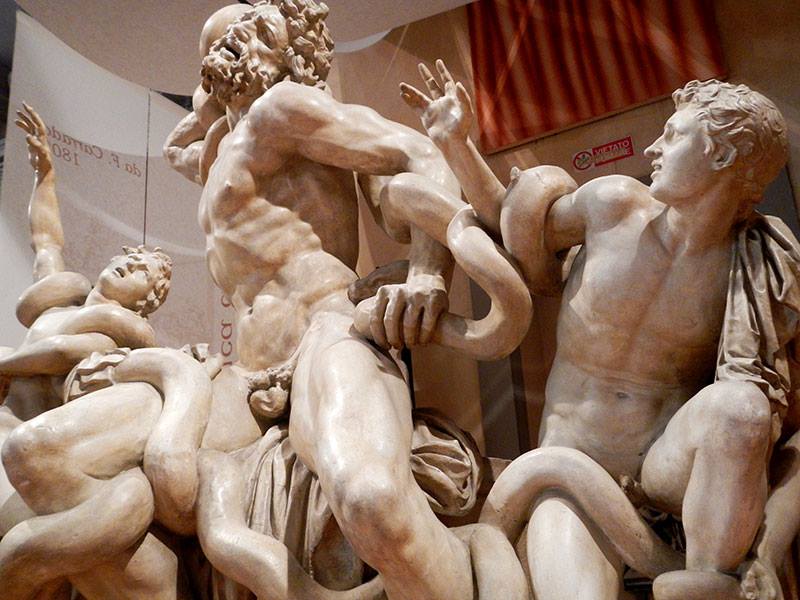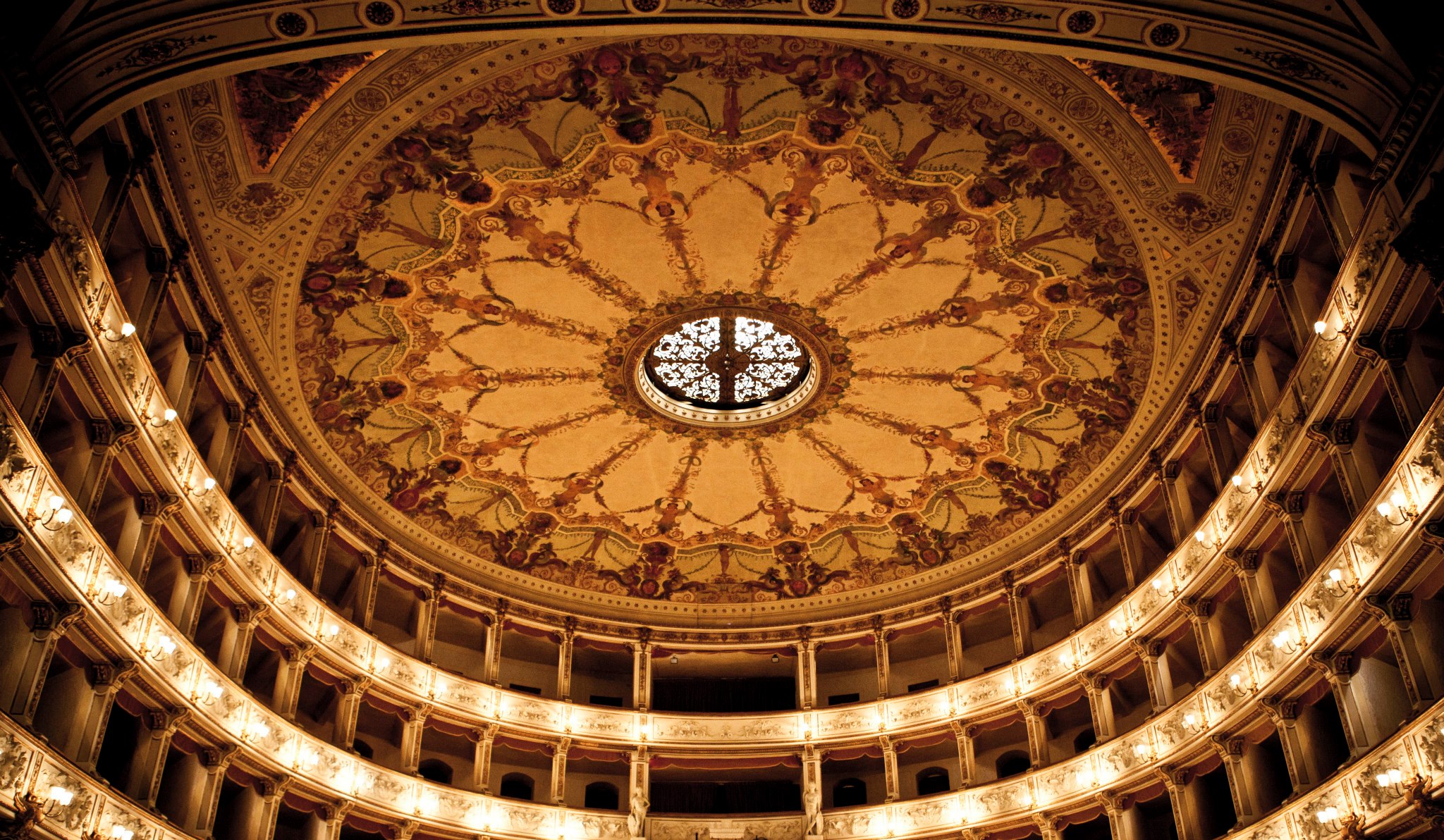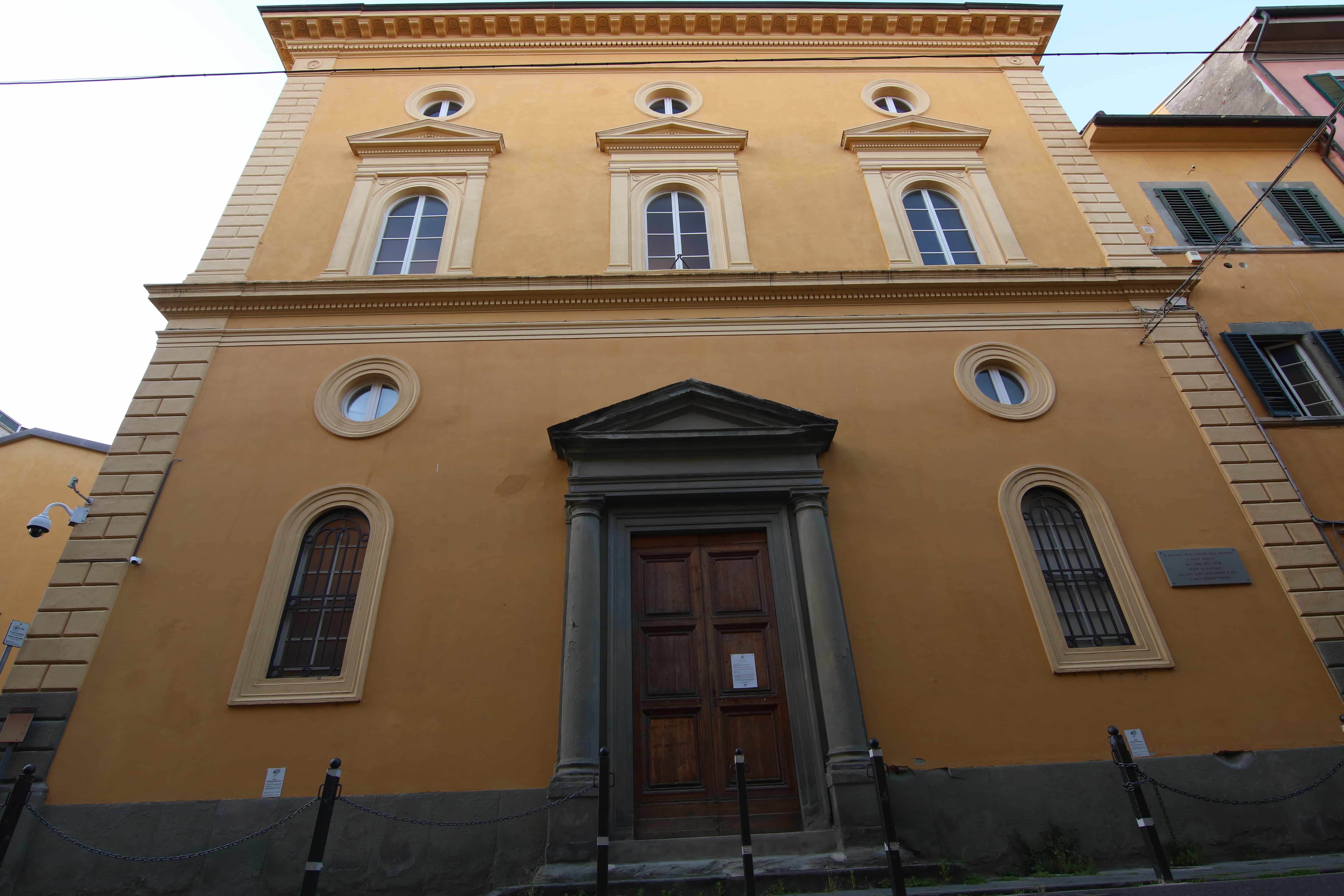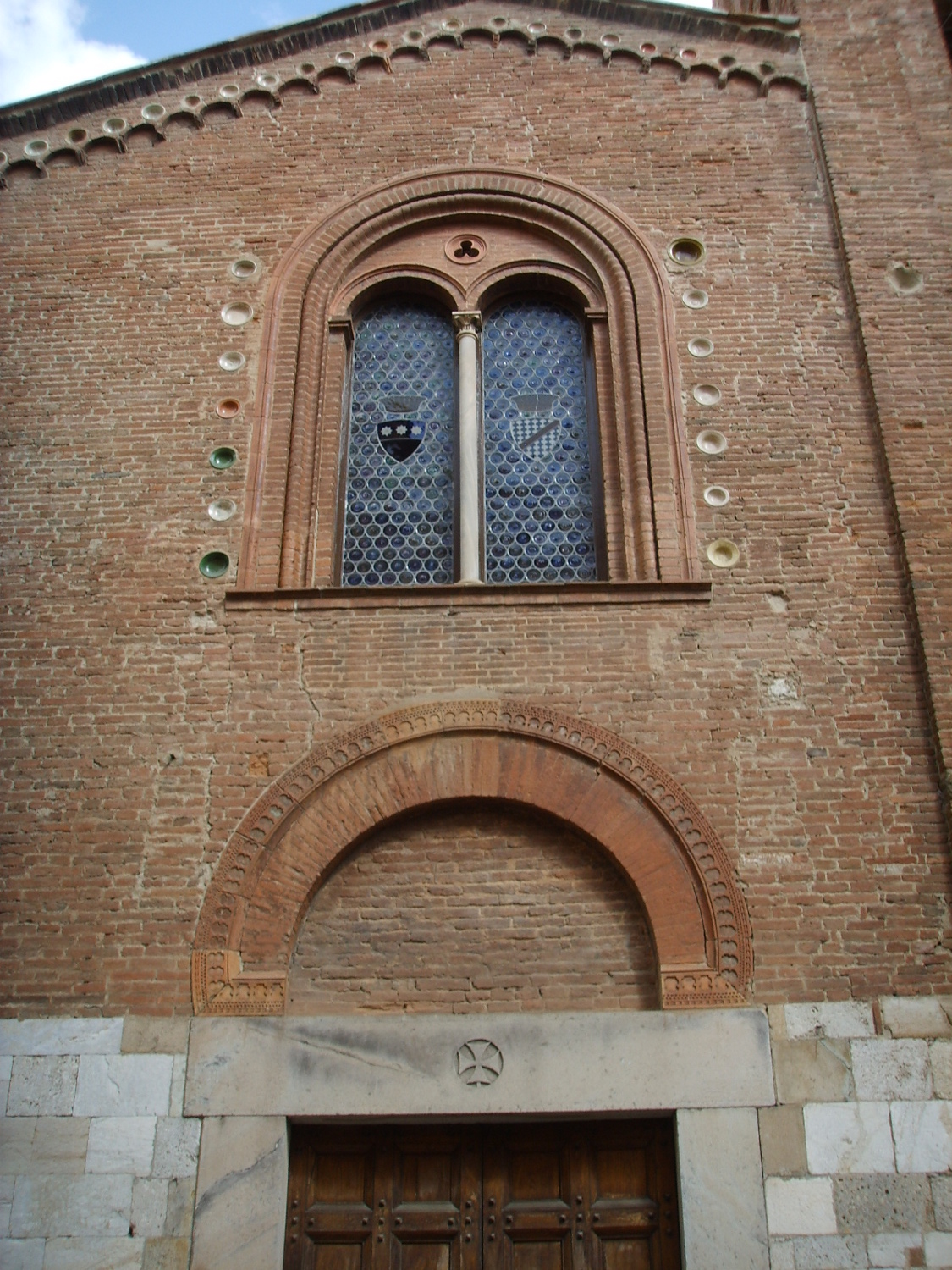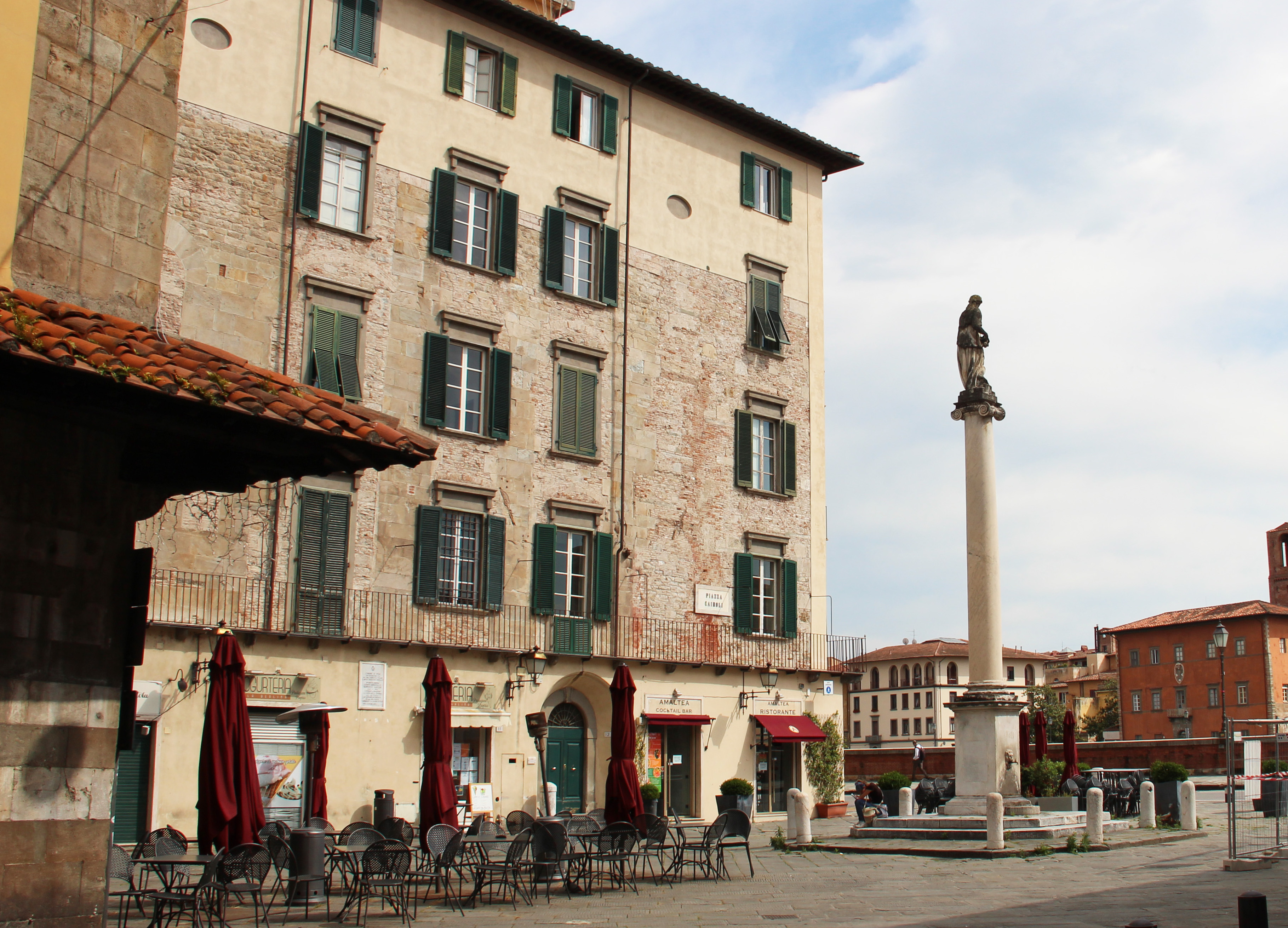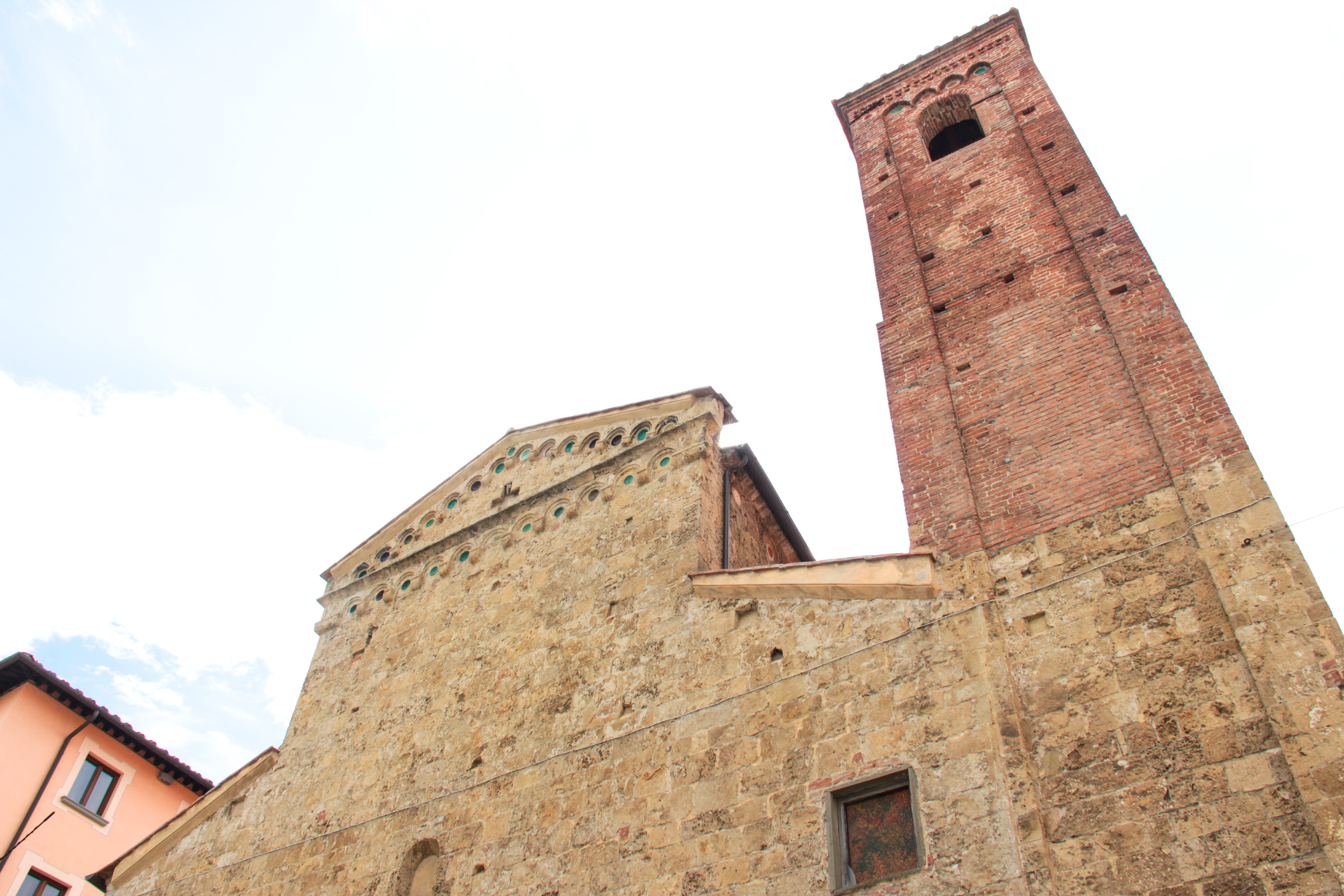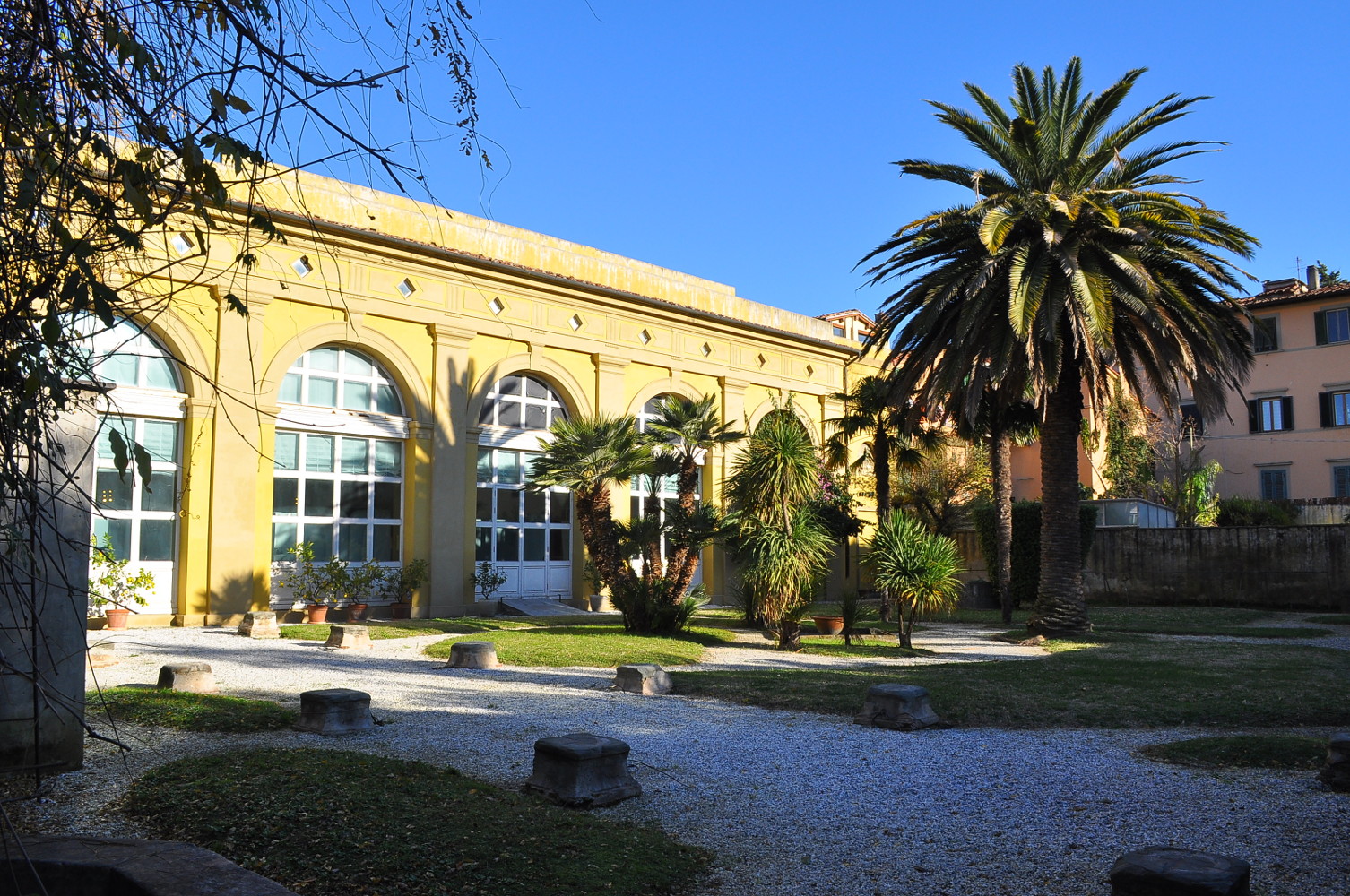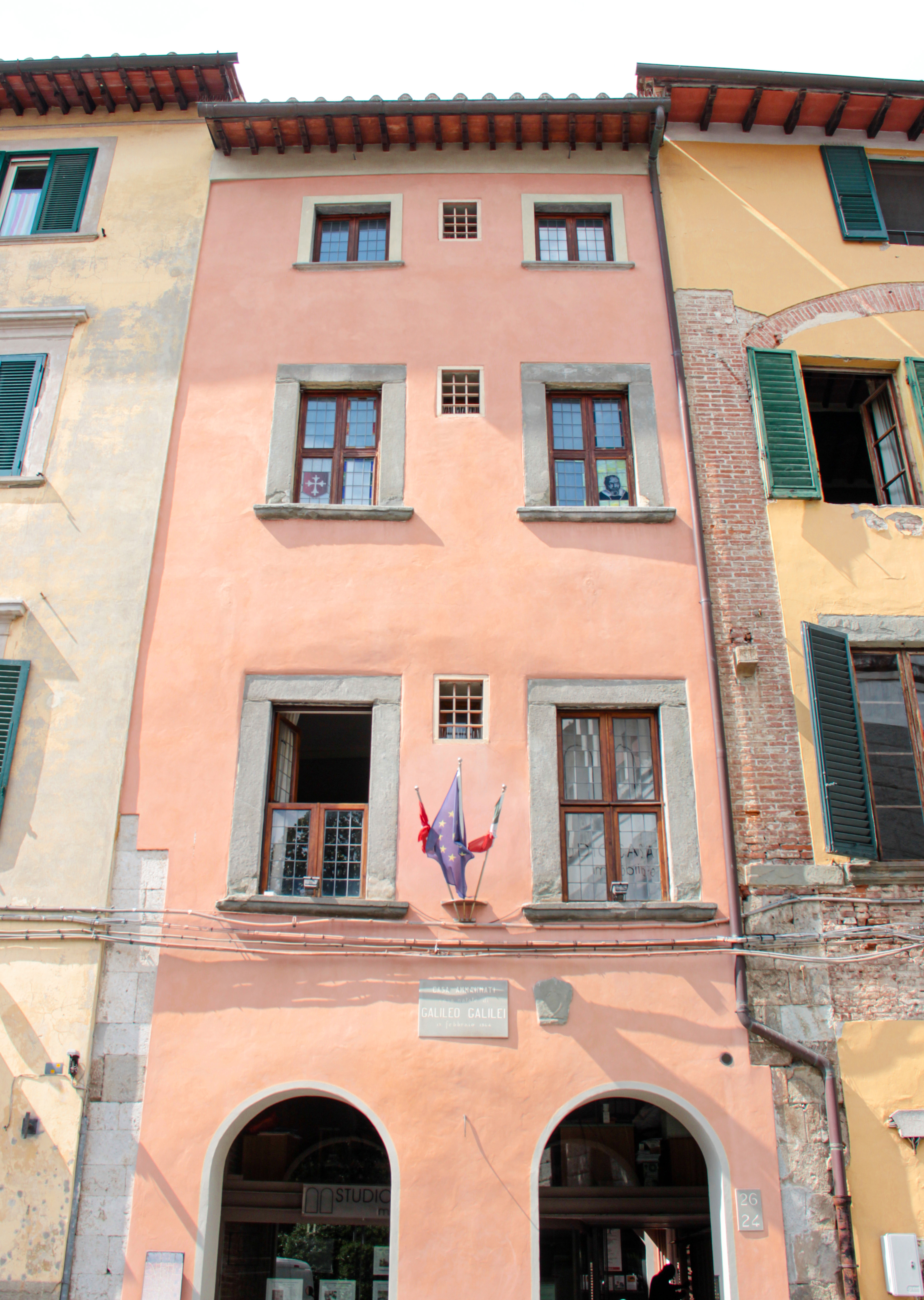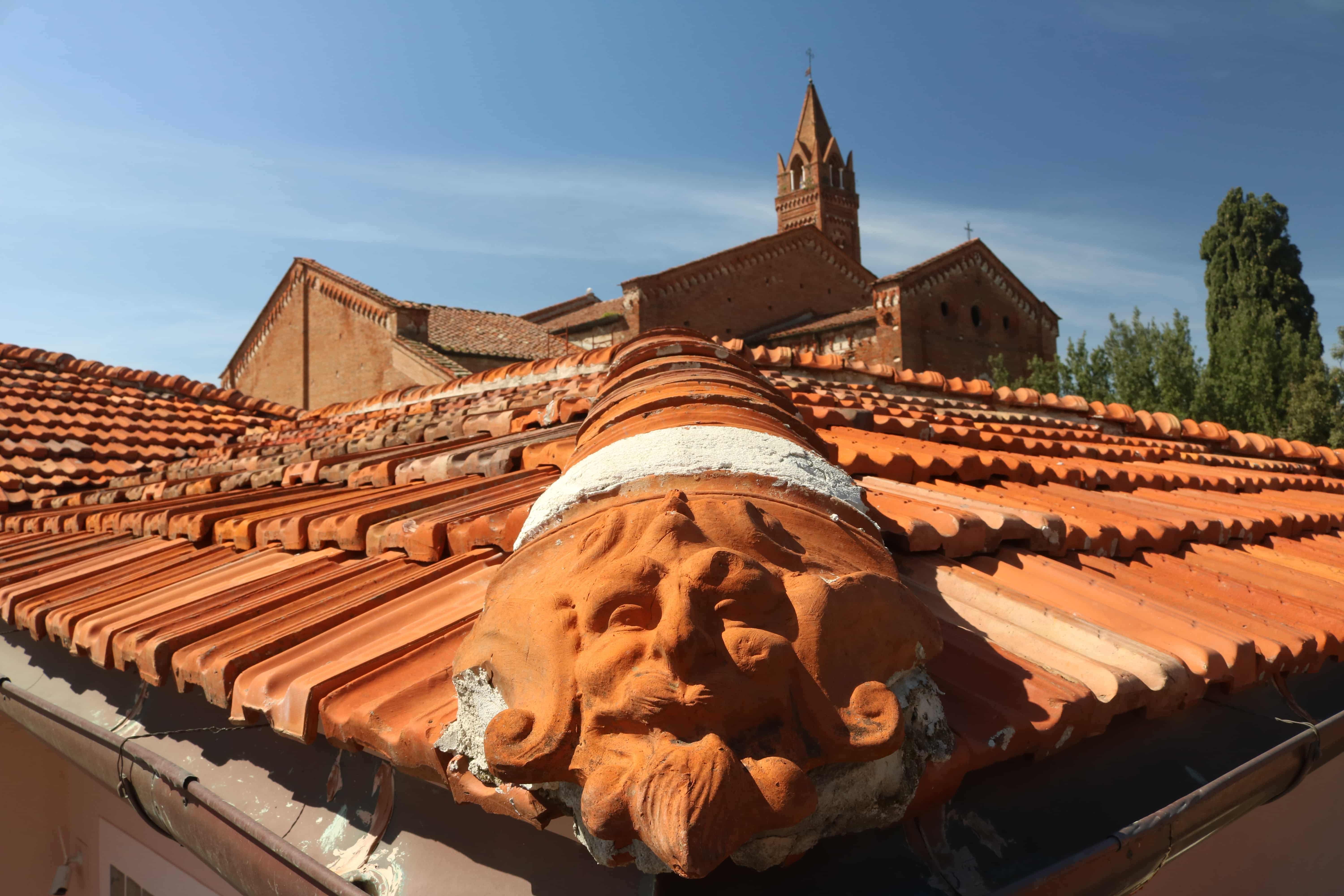Chiesa di San Paolo all’Orto
This Church, documented since 1086, in 1132 was an Agustinian canonical cure. From 1472 to 1808, when the convent was suppressed, it belonged to Augustinian Domenican nuns of via Romea, In 1819 the building was opened once more for worship and became the seat of the confraternity of St. Barbara and the Birth of Mary. Until the mid 20th century, the church was still used for worship but now it is deconsecrated and is a Gipsoteca, housing a collection of plaster casts of ancient works of art belonging to the University of Pisa.
The lower part of the facade is decorated in the style typical of Pisan Romanesque architecture, first used in the Cathedral (Cathedral): round dead arches, pilasters, architraves, rhombs and oculi, two-toned marble inlays and human or animal heads with symbolic meanings carved on capitals made in Biduino’s workshop (end 12th century); There is disagreement as to the date of the upper part, in brick and panchina livornese stone.
In spite of the date “1595” carved into the base, perhaps to record repairs, the massive brick bell tower was probably built in the 13th century. The nuns made considerable changes to the building in order to create a small Church for the convent. The apse and 14th century frescos were demolished; columns with medieval capitals are still visible, mixed with remains of 17th - 18th century stucco decorations; recent renovations have recovered traces of 12th – 13th century paintings.
The church gives its name to the square onto which it faces. This square, the result of demolitions in the 19th century, no longer has its original medieval dimensions. It now extends towards via dei Mercanti, where good examples of 12th and 13th century tower houses (casetorri) can be admired. The Teatro Verdi, and the 19thcentury Courthouse back on to the square.

